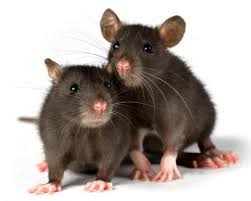Wheather the Season is the Cause for Unhygenic Environment. Winter nights can mean a mouse in the house or even a rat. But poisoning isn’t the only way to get rid of them.
As winter closes in, mice enter houses more often and rats are seen more frequently in gardens. This can be a matter of concern, but there are ways of coping with them other than putting down anti-coagulant poisons, which cause a great deal of suffering.
Which rats and mice enter houses?
House mice, wood mice, yellow-necked mice and brown rats are common in houses. Of the three mice, the one you’re most likely to encounter at home is the wood mouse, as this species is even more common in houses than the house mouse.

House mice and brown rats are most frequent in houses close to city centres, wood mice in the suburbs, and yellow-necked mice in rural areas in the South-east and Welsh borders.
Rats and mice are most common in roof spaces, then cellars and cupboards. They can also live in wall spaces.
What signs do they leave?
Cloying ‘acetamide’ smell characteristic of house mice; other mice leave little odour.
Gnawing – rodents need to gnaw continuously to keep their incisors short.
Tooth marks – larger ones are made by rats, who can gnaw through soft metals, such as lead and aluminium.
Droppings – a rat’s are 12mm long and often tapered at one end; a mouse’s are roughly half the size and thinner.
Greasy fur marks – rats and house mice leave dirty black smears along well-travelled routes, particularly ‘loop smears’ where they squeeze under roof joints.
 What problems can they cause?
What problems can they cause?
- Rodents generally cause minor problems in houses – of those with yellow-necked mice, 42 per cent suffer damage to furnishings and internal structures, 31 per cent to food, and 9 per cent to insulation and wiring; 18 per cent suffer no damage.
- Chewing wiring is a particular problem – it can lead to fires and be expensive to repair.
How do I get rid of them?
- Snap traps are generally humane but unpleasant.
- Live traps may appeal, but ‘dumping’ the animal in the wild is likely to lead to its death. Also, if you don’t take it at least 2km away, it may well arrive back home before you.
- Indoor devices that use electromagnetic interference or ultrasound to drive rats and mice out of houses are useful. But don’t use them if there are bats in the house or roof.
- Anti-coagulant poisons cause a slow, painful death. Problems also occur if the rodent is eaten before it dies – 40 per cent of barn owls, polecats, stoats and weasels carry rodenticides from eating poisoned prey.
- Prevention is easiest: repair broken air bricks and holes in outside walls, floorboards or skirting boards; tidy up cupboards and remove nesting material.